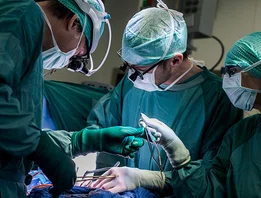


Precision medicine
Predicting Treatment Outcomes of Cancer Nanomedicine
Predicting Treatment Outcomes of Cancer Nanomedicine
Cancer Nanomedicine Combined with Mathematical Modeling of Nanoparticle Transport May Revolutionize Personalized Medicine
Cancer Nanomedicine Combined with Mathematical Modeling of Nanoparticle Transport May Revolutionize Personalized Medicine
Carly Filgueira, PhD
Nanomedicine holds great promise in the detection, diagnosis and treatment of cancer in patients. However, it also has several notable limitations, including nanoparticle tumor uptake and tissue penetration. To overcome these shortcomings, Carly Filgueira, PhD, assistant professor of nanomedicine and cardiovascular surgery at Houston Methodist, has provided a proof of concept of intra-tumoral zone-specific delivery of nanoparticles that may have long-standing implications towards enhancing cancer therapy efficacies.
According to the Centers for Disease Control and Prevention (CDC), 2019 heralded about 1.7 million new cancer case reports and nearly 600,000 cancer-related deaths. These numbers underscore the importance of further investigating improved treatment strategies and more effective cancer therapies.
In a recent study published in Langmuir, Filgueira demonstrated zone-specific accumulation patterns of intratumorally injected nanoparticles that are influenced by surface functionalization. Further, mathematical modeling of nanoparticle transport allowed Filgueira to mechanistically characterize differences in intra-tumoral distribution patterns.
Overcoming challenges associated with therapeutic and nanoparticle tumor uptake and tissue penetration is critical for establishing effective cancer therapies. In this work, we demonstrate controlled spatial delivery of intratumorally injected gold nanoparticles (zonal delivery) by leveraging different surface chemistries while minimizing variables in administration through injection with a syringe pump set at constant dispense volume and flow rate. For the field of cancer nanomedicine, there are several fundamental and applied research directions that can be considered. From an applied perspective, a mathematical framework that allows for particle distribution predictions based on surface properties could revolutionize the current methods of personalized medicine.
Carly Filgueira, PhD
Assistant Professor of nanomedicine and cardiovascular surgery at Houston Methodist
In some ways, this research study shows us a glimpse into the future. A combination of mathematical modeling and loco-regional administration of nanotherapeutics has the potential to catapult cancer nanomedicine to unprecedented heights.
Rossana Terracciano, Yareli Carcamo-Bahena, Amber Lee R Royal, Luca Messina, Jack Delk, E Brian Butler, Danilo Demarchi, Alessandro Grattoni, Zhihui Wang, Vittorio Cristini, Prashant Dogra, Carly S Filgueira. Zonal Intratumoral Delivery of Nanoparticles Guided by Surface Functionalization. Langmuir. 2022 Nov 15;38(45):13983-13994. doi: 10.1021/acs.langmuir.2c02319.
This study was supported by the Golfers Against Cancer (A.G., E.B.B., and C.S.F.), funds from Houston Methodist Research Institute (C.S.F.), and the Cockrell Foundation (V.C., P.D.). The mathematical modeling work has been supported in part by the National Institutes of Health (NIH) Grants 1R01CA253865 (Z.W., V.C.), 1R01CA226537 (Z.W., V.C.), and 1R01CA222007 (Z.W., V.C.).
Abanti Chattopadhyay, PhD
August 2023
Related Articles








